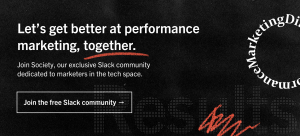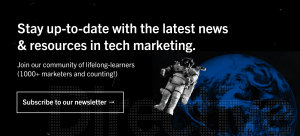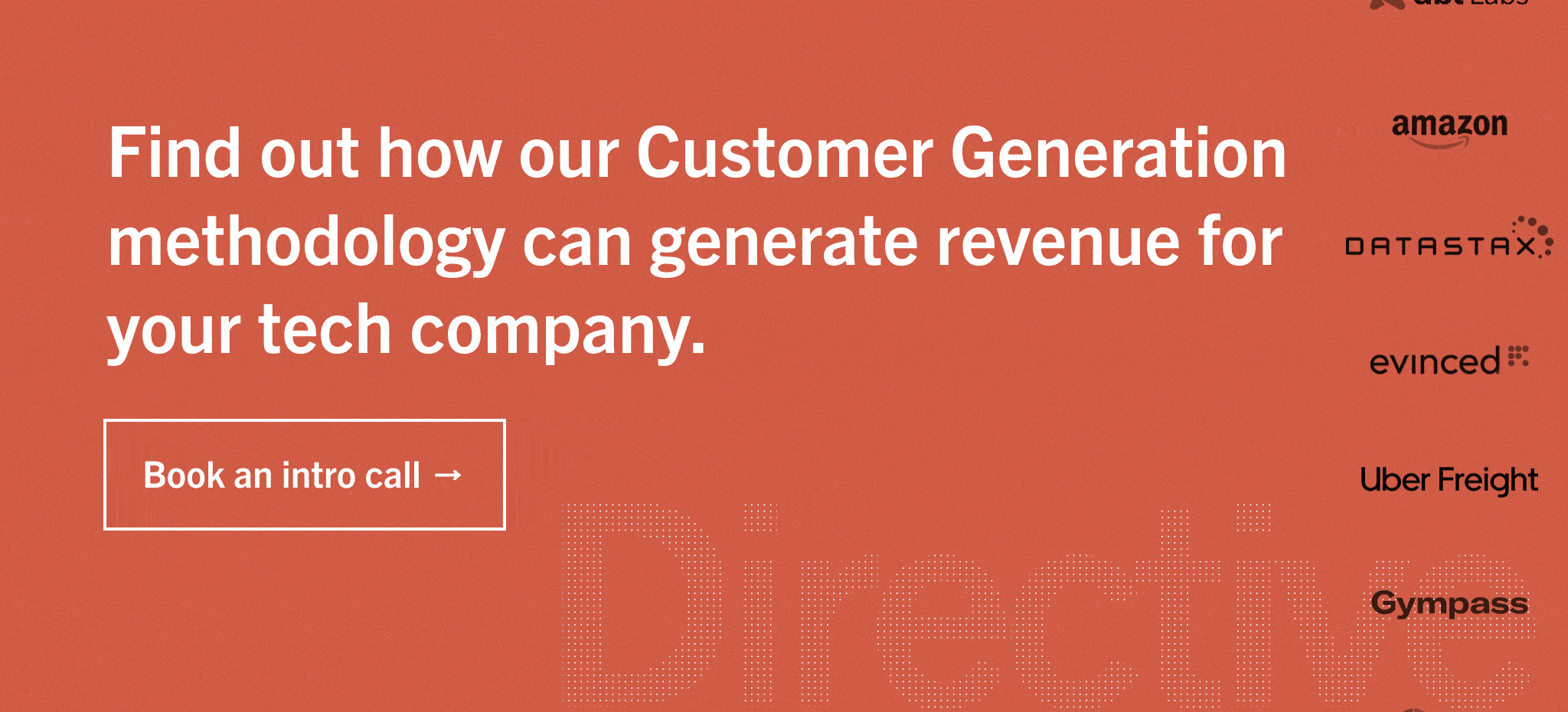While a majority of B2C companies are crushing the social media marketing game, many B2B organizations are lagging behind. Even with Facebook’s growing popularity, many B2B brands still struggle to nail down an effective strategy.
The problem? The B2B buyer’s journey is much longer and more complex than that of a general consumer. It’s going to take a lot more than a stellar Facebook ad to turn a prospective buyer into a paying customer. Many B2B companies remain skeptical about the efficacy of social media and would rather focus their efforts on tried-and-true lead generation strategies.
In reality, while Facebook may not be the most obvious choice for B2B marketers, the platform can be a powerful channel for promoting your brand and generating qualified leads. Those leads may not turn into customers overnight, but that doesn’t mean you can’t leverage the platform as an effective tool to supplement your other sales and marketing efforts. It just requires some well-thought-out planning and a little bit of extra elbow grease.
In this guide, we will cover everything you need to know to build out a winning B2B Facebook ad strategy that gets more eyes on your brand, generates leads, and moves you closer to hitting revenue goals.
Facebook advertising for B2B brands
In 2020, the number of active Facebook users has skyrocketed to over 2.6 billion. That means there’s a good chance your audience is already using the social media network in some capacity. If your goal is to expand your brand’s reach and target your audience in a more meaningful way, then it’s in your best interest to explore the advertising possibilities the platform has to offer.
With 91% of B2B marketers already leveraging Facebook as a marketing tool, there’s no reason why you can’t get in on the action.
Let’s get started.
Focus on the funnel.
Before you can start writing copy and creating visuals, you have to consider your audience and their position in the funnel.
Effective advertising is all about targeting the right person, with the most relevant message, at the right time. The same message you use for your top-of-the-funnel audience won’t be the same as a mid or bottom-of-funnel user.
Thinking about your audience in terms of where they are in their buying journey will help you to determine:
- Which message and value proposition will have the most impact
- Which type of ad will be the most effective
- Whether or not you should focus on mobile ads for that audience type
- What kind of content you promote through your ads
The conversion funnel will help you build the foundation of a highly-targeted Facebook ad strategy that’s designed to deliver the right message to the right audience.
Since B2B sales cycles tend to be more complicated, mid-funnel ads are especially effective at driving clicks and conversions.
Let’s look at an example:
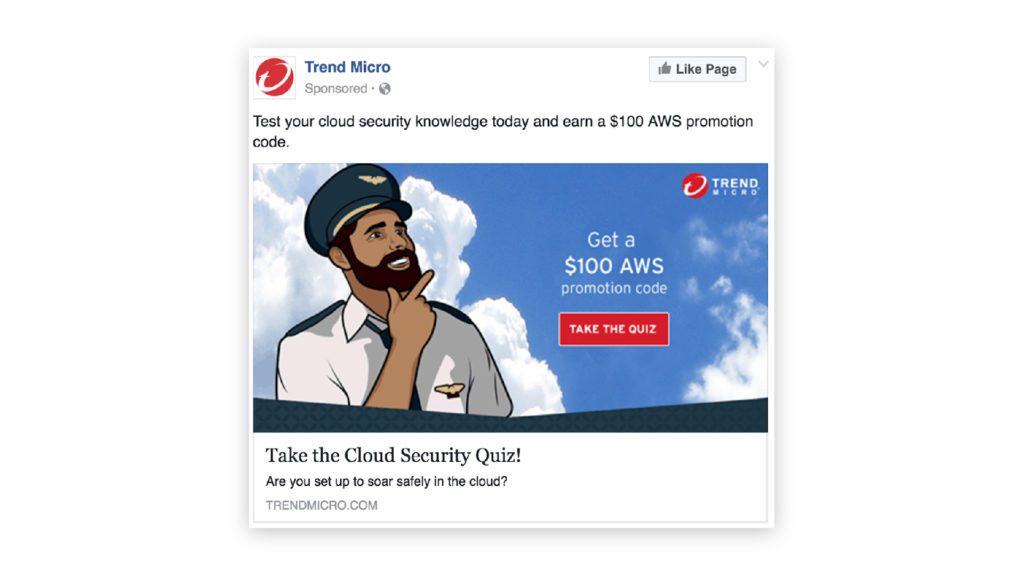
Why it works: This ad provides immediate value while simultaneously raising brand awareness. It entices the user to take action and leads to something tangible. The offer is clear, without being overly promotional or requiring a major commitment from the person on the other end.
If you want to create ads that target other areas of your funnel, just make sure that those ads are distinct and have a purpose.
Don’t create ads just for ad’s sake. Create them to fuel conversions.

Provide clear and relevant value.
Facebook prioritizes ad content based on how relevant it is to its intended audience. The ad delivery system is designed to provide users with highly-contextual ad experiences that show them content they are likely to be interested in.
To measure relevance, Facebook assigns a score between 1-10 (10 being the highest) to your content. This score is pre-determined by the number of positive or negative interactions that Facebook expects your ad to receive. Once your ad is live, the score is continuously updated to reflect these interactions. Video views and conversions are considered to be positive interactions. On the other end, people reporting or hiding your ad are observed as negative.
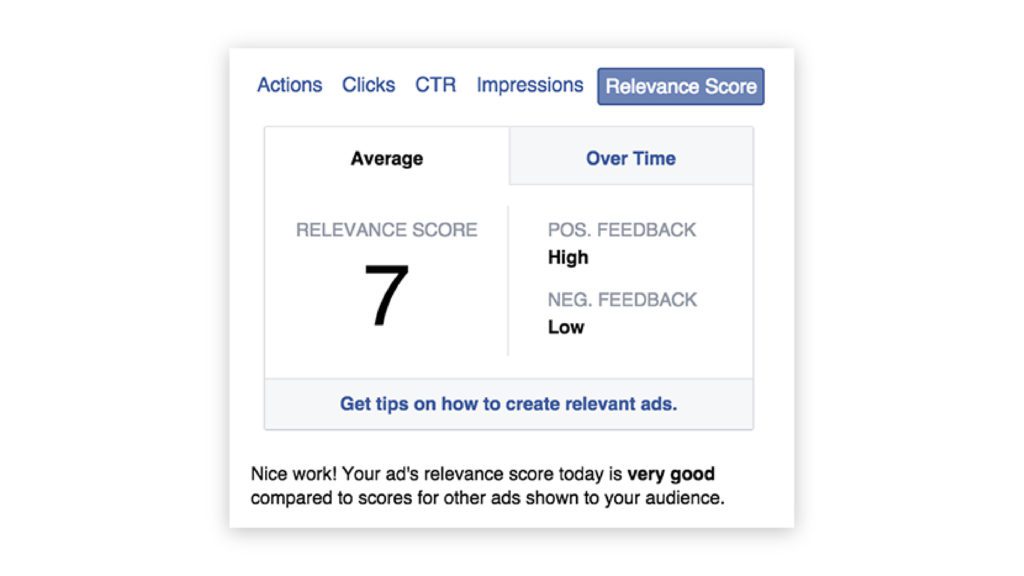 Source: Wordstream
Source: Wordstream
The reason Facebook does this is to encourage advertisers to deliver better ad experiences. You can monitor your relevance score after your ad campaign launches to gauge whether or not you need to switch up the copy to achieve better results.
While this is good for the user, this can spell trouble for advertisers. Unless your ad content piques the right interest, your ads may not receive that high of a relevance score.
It’s important to note that relevance score is not the sole indicator of ad performance. The score is there to serve as a benchmark and guide your creative efforts, but it’s not going to be the deciding factor that affects the overall results of your campaign.
That’s why it’s important to tailor ad content to your audience and provide immediate value. If there’s no substance to your content, it’s not going to succeed no matter what your relevance score is.
One of the simplest ways to provide value outright in your advertisements is by using a lead magnet. Put simply, a lead magnet is a tool for incentivizing prospective buyers to provide their contact information by offering something valuable in return. Usually, this is a piece of content such as an ebook, downloadable research report, or even a webinar.
Here’s an example:
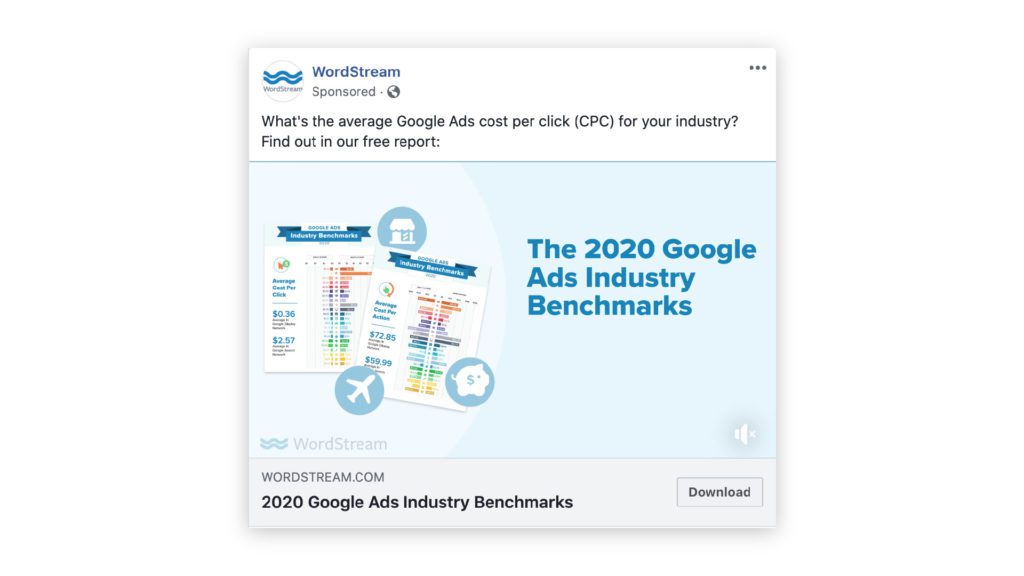
Why it works: This ad is speaking directly at the viewer (“your industry”). It feels personalized even though it’s likely not. Additionally, the value proposition is immediately clear. If the user clicks through, they can download a full report covering topics that are highly relevant to their profession.
When you offer your audience a free resource, you’re killing two birds with one stone. The person on the other end gets a valuable piece of content and you get a lead.
Experiment with Facebook Audiences.
Just like any other industry, B2B companies struggle with competition. Your audience needs to buy into you. Otherwise, they’re going to find an alternative.
This means two things:
- Ads need to be shown to businesses that are most likely to buy
- Your value proposition needs to make it clear that you are relevant to them
Let’s look at an example:
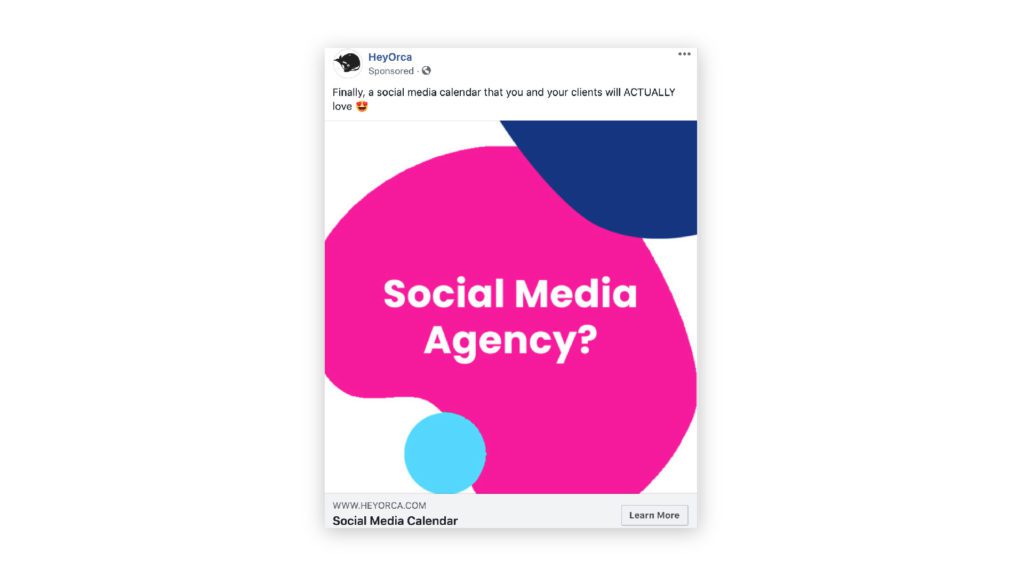 Why it works: This ad grabs the right attention. The featured image outright addresses the target audience: “Social Media Agency?” It’s targeting people who already have an interest in what’s being offered.
Why it works: This ad grabs the right attention. The featured image outright addresses the target audience: “Social Media Agency?” It’s targeting people who already have an interest in what’s being offered.
Calling out your audience in the ad copy is one way of getting their attention, but it doesn’t always guarantee that the right people are going to see it in the first place.
Luckily, Facebook makes targeting ads incredibly easy with its Audiences feature. Using this tool, you can target specific audiences based on a variety of factors such as demographics, interests. You’re even able to target people who have previously expressed interest in your business. This includes past customers or website visitors.
For B2B brands, the “spray and pray” approach simply won’t work. You need to target your campaigns and narrowly define a smaller, more engaged group of users. The Audiences feature ensures that your ads are delivered to users who are the most likely to be interested in your offerings.
Combining Audiences with laser-targeted copy is a simple, yet effective way to make your ads stand out and make an instant connection with your audience.
Identify the right type of ad for your audience.
Many B2B Facebook advertising campaigns fail because they’re not the right type of advertisement for the intended group of users. You can have the most engaging and clever ad but if it’s not delivered in the right format, then it has the potential to fall flat.
Facebook offers a variety of different ad formats:
- Image
- Video
- Carousel
- Instant experience
- Collection
Each one serves a slightly different purpose.
Here’s an example of a carousel ad:
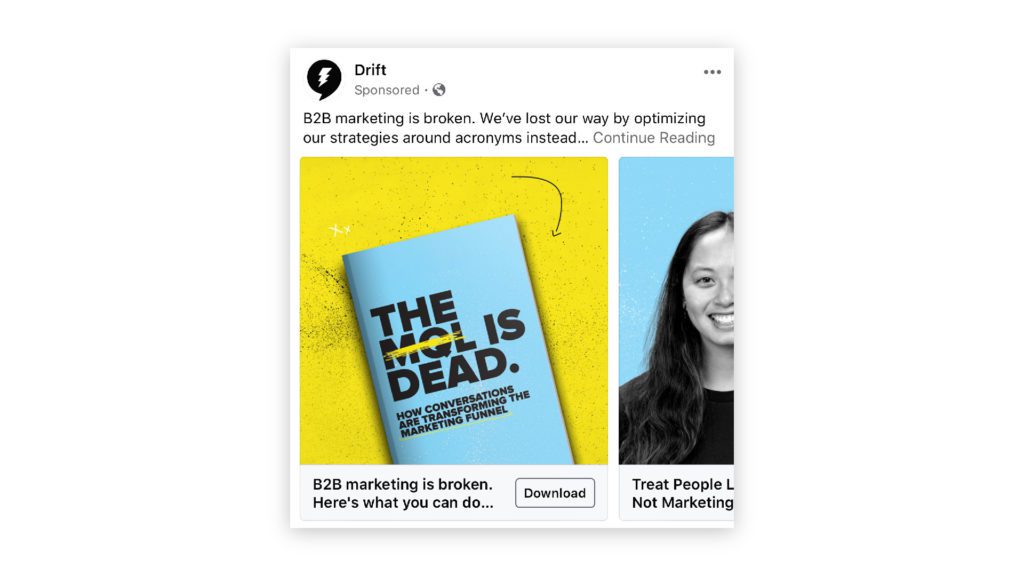
You can see how this ad format allows the user to swipe through a series of images and review different content offerings.
To give another example, this is what an image ad looks like:
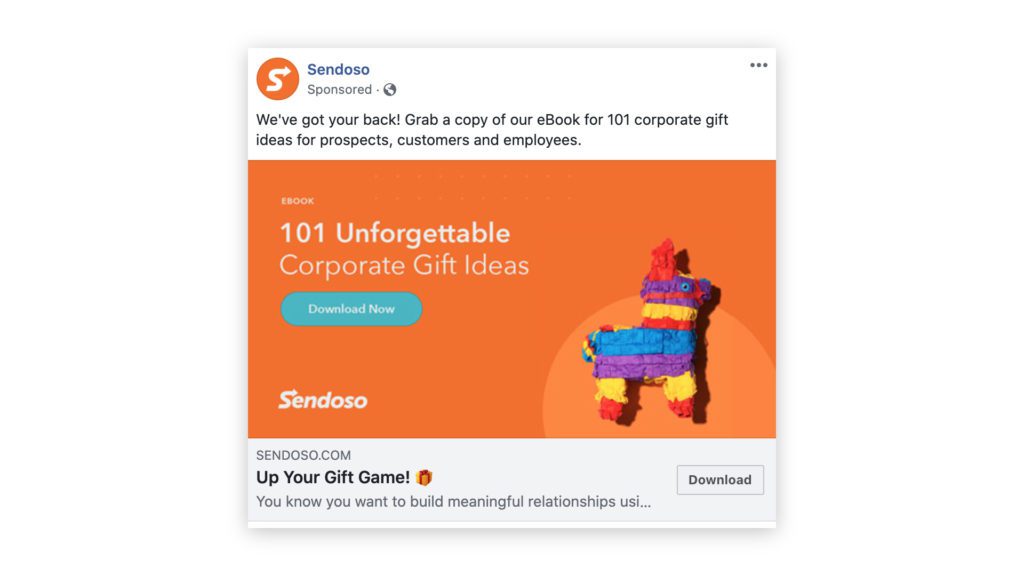
Why it works: B2C businesses might find more value in a carousel ad to sell products, whereas a B2B company might want to focus on something simple and to-the-point. In this case, this middle-of-funnel ad is effective because of its simplicity. The offer is prominently displayed and the viewer knows exactly what action they need to take in order to get the ebook.
If simplicity isn’t your thing, you also have the option to use a video ad format. The Facebook video engagement rate averages out at about 6.13%, which is high compared to the average overall engagement rate (3.6%). This creates a unique opportunity for B2B advertisers to engage with Facebook audiences using video rather than standard image ads.
But again, it’s all about strategy.
Send the wrong ad type to the wrong audience, and you might not see the ROI that you want.
Determine proper ad placement.
Of course, even if you choose the right ad type, you have to worry about placement, too.
There are two main areas where your Facebook ads can appear: the news feed or right column.
As always, there are pros and cons to each placement, depending on your audience and goals. News feed ads are the most popular by far, and typically have the broadest reach, but they’re also the most expensive.
There’s also more competition on the newsfeed.
You’re not only vying for attention with other advertisers, but also with posts from family, friends, and other news sources.
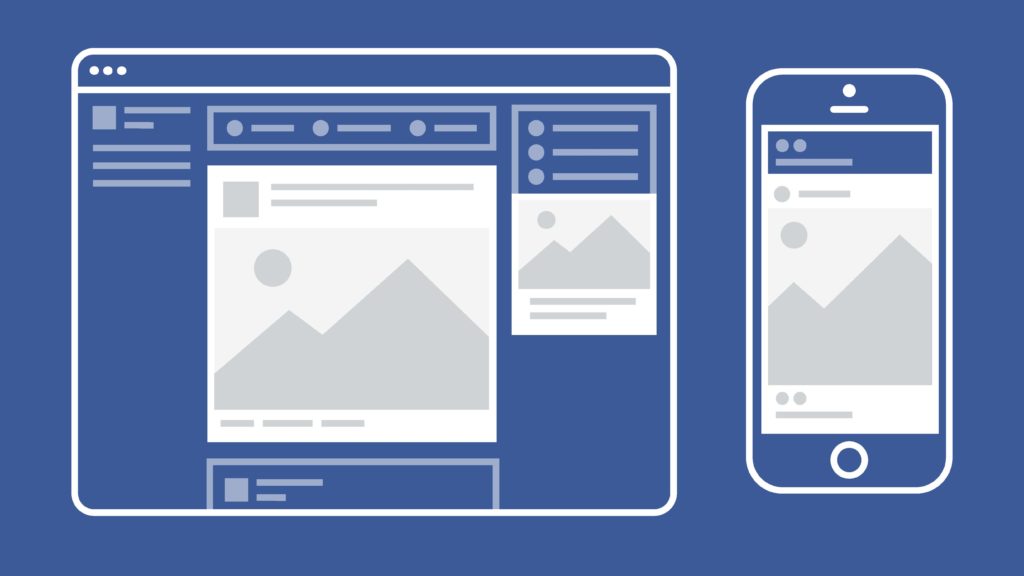
On the other hand, right column ads are typically smaller and less expensive, and they come with a catch: they only appear on desktop feeds.
If you choose to list a right column ad, but your audience primarily views from mobile, your success rates automatically drop.
Identify where most of your traffic is coming from and then decide if news feed or right column is the best placement type for your audience. It’s most likely that news feed will be your best bet, so don’t settle for the cheaper option if it’s not a fit for the users you want to target.
Optimize your ad campaign for mobile.
Facebook puts a lot of effort into helping advertisers reach mobile users. And for good reason — the social media giant’s massive growth is powered by mobile ads more than any other type. If you want to ensure that your Facebook ads have the most reach, you want to target both mobile and desktop users.
To properly optimize your ads for mobile, here are some things to consider:
- Keep it short — you have even less space to work with.
- If you include a video, make sure it can be viewed without sound.
- Once a user clicks the ad, make sure the landing page that pops up is also mobile-friendly.
Overall, the same general rules that apply for desktop ads also apply for mobile.
Here’s an example:

Why it works: Mobile users scroll through content quickly. Advertisers have very little time to capture their attention. This ad is noteworthy because of its simplicity. The copy is big and bold and the offer is communicated clearly. Additionally, the subtle use of emojis draws the viewer’s eye to the text.
In today’s world, people are on their phones constantly. Failure to properly account for mobile users when building out an ad campaign can greatly diminish your results.
3 campaign ideas to inspire your B2B Facebook ad strategy
Now that you have a strong grasp of what key elements are required to build out a successful campaign, let’s look at some specific tactics that can help you hit the mark.
1. Create a brand awareness campaign.
This is a top-of-the-funnel strategy, but can still work well for B2B businesses if executed correctly.
In this example, this ad from Marketo doesn’t immediately ask for a buy-in:
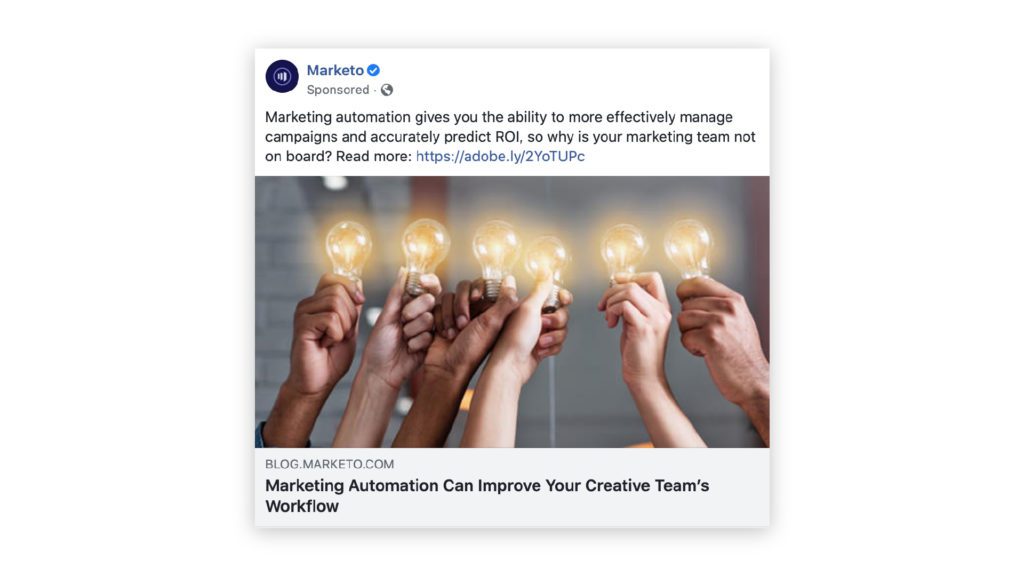 Instead, the ad points the user to a long-form piece of content where the user can learn more about marketing automation software in general.
Instead, the ad points the user to a long-form piece of content where the user can learn more about marketing automation software in general.
Remember that you may have audiences that are just becoming familiar with your brand. These people are not yet ready to see an ad that offers a free trial or demo because they don’t know enough about your business. They may not even know that they are in the market for the type of solution you offer. This type of campaign is effective for educating and nurturing the users that are lingering at the top of the funnel.
2. Use social proof to your advantage.
Similar to how consumers read product reviews before they make a purchase, B2B buyers have evolved to seek out social proof and third-party validation during the buying process. Research shows that 52% of buyers read reviews prior to making a purchasing decision — so why not make it easier for them?
Showcasing positive reviews and testimonials in your Facebook ads is a simple method for establishing trust with your audience in the early stages of the buying cycle.
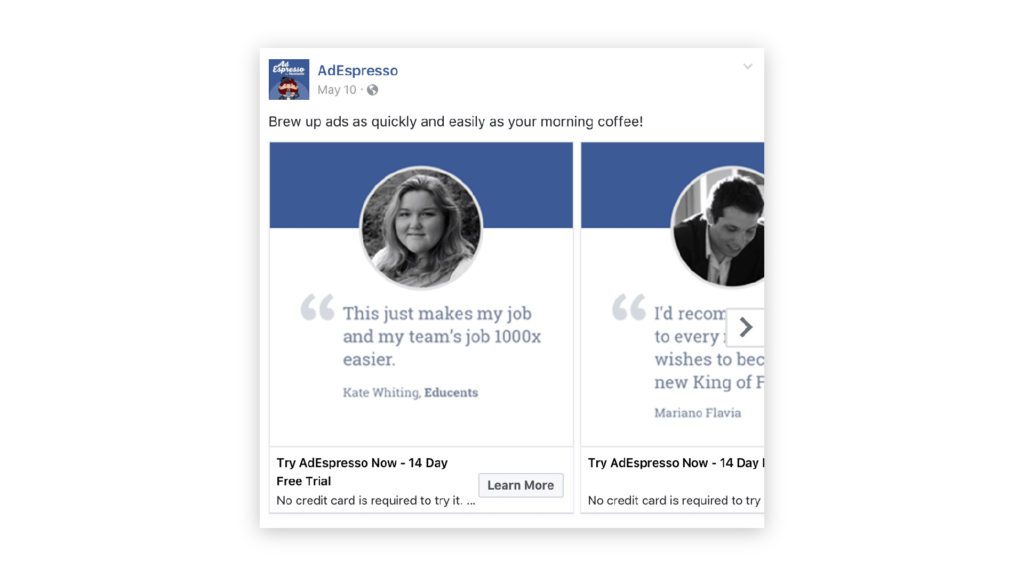
Source: AdEspresso
This is a middle-of-the-funnel strategy, as audiences may already be familiar with your brand but not yet understand why your offering is better than the alternatives. Or they might have heard about your product but don’t know if they should invest.
3. Use a tripwire.
In marketing speak, the term “tripwire” refers to a conversion method where you make your core offering less expensive initially. This method draws prospective buyers into your funnel by advertising a low-cost offer. This buys you time to build the relationship and opens a window of opportunity to up-sell them down the line.
You create a tripwire by scaling down your product or service into one inexpensive piece. It’s essentially giving away a teaser version for only a fraction of the price. For example, if your business sells influencer marketing software, you could advertise a 30-day free trial of your solution.
These ads should be reserved only for people who have previously interacted with your business before in some capacity (visited your website, downloaded a piece of content, attended a webinar, etc.) They know who you are and how you can help them, but they need an extra incentive to get started. These warm leads are primed to convert.
Final thoughts
Facebook advertising is no longer just reserved for B2C brands. With the right strategy in place, it’s possible for B2B companies to leverage the social media platform to build brand awareness and generate qualified leads.
When it comes to creating effective Facebook ads, the closest thing you’ll find to a silver bullet is simply understanding your audience. This is the piece of the puzzle that will set you up for the best results each and every time. It’s imperative to know what they want, the types of ads they respond to, and the devices they use.
A little research into where your Facebook traffic is coming from will hopefully clear that up. Other than that, focus on creating ads that meet audiences wherever they’re at in the conversion funnel. And when in doubt, offer something of value.
If you want to take your PPC efforts to the next level, you can count on our expert tech marketing team to get you there. We specialize in Customer Generation and have a proven track record of delivering exceptional results for our clients.
Book a call with us today to learn how you can gain a competitive edge in the world of PPC with Customer Generation. Let’s work together to drive meaningful growth and achieve your business goals!
-
 CEO
Garrett Mehrguth
CEO
Garrett Mehrguth
Did you enjoy this article?
Share it with someone!

